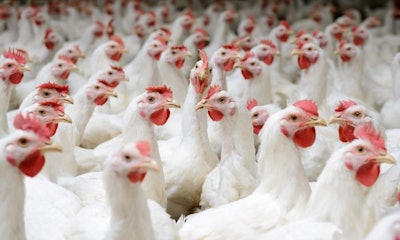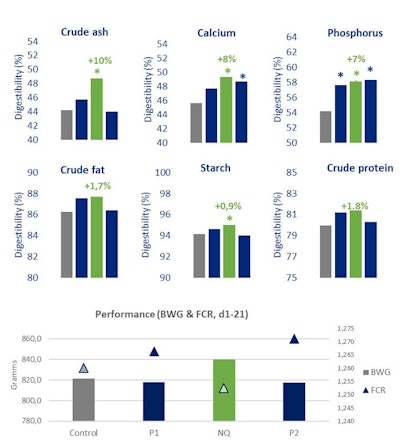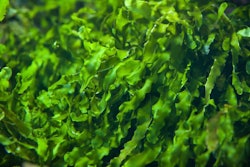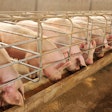
Novel combinations of natural extracts, from plants and seaweeds, offer alternatives to growth promoters and support better performance of livestock animals
The market of plant extracts, or phytogenics, emerged in the late 80s and experienced a boom during the past decade, with the demand from consumers for more sustainable ingredients. It corresponds as well to the end of “black box” solutions and the development of more transparent, advanced and innovative technologies.
The rise of phytogenics in animal nutrition in the past decade
With the ban of antibiotics used as growth promoters (AGP) in several regions worldwide, nutritionists have tried to use additives based on plant extracts to improve performance of broilers to the same level as AGP. If the initial intention was to use plants extracts for their antimicrobial activity, research has shown their broader range of effects on gut functions, such as:
- Modulation of microbiota composition and activity: Certain plant extracts can limit the growth or virulence of certain pathogens while have limited effect on “good” bacteria.
- Stimulation of digestive functions: Several plant extracts increase the activity of endogenous digestive enzymes and influence uptake and transepithelial transport, and improve nutrient digestion and absorption.
- Modulation of immune response: Specific molecules contribute to lower gut inflammation while other molecules modulate cytokine production from macrophages or down/up regulate the expression genes coding for cytokine production to keep inflammation under control, or support development of acquired immunity.
- Improvement of gut integrity: Some molecules or natural ingredients stimulate mucous production and epithelial cell proliferation and therefore contribute to the maturation and integrity of the gut structure.
The group of phytogenics covers a wide group of molecules “inspired” from nature. All these molecules come from a “plant,” but may come from different parts of the plant (leafy part, bark, seeds, roots, etc.). They may be extracted using different methods ranging from simple milling and mixing to more elaborate water distillation (essential oils), alcohol extraction (tinctures) or chemically synthesized (nature-like compounds). These ingredients have different properties, different effects on animals, and also different purity or stability, especially for the volatile compounds.
Phycogenics, a novel generation of natural ingredients
Phytogenics are of great importance in animal nutrition, and marine macroalgae can be considered as supplements to positively influence animal performance and health parameters. Seaweeds represent a large and heterogeneous group, including brown algae (Phaeophyceae), red algae (Rhodophyceae) and green algae (Chlorophyceae). While algae are frequently studied as a source of nutrients, seaweeds possess several bioactive molecules, “phycogenics” (from Greek phycos, meaning algae), that are studied for their prebiotic, antimicrobial, antioxidant, anti-inflammatory and immunomodulatory effects. Few examples of molecules exclusively found in marine algae are sulfated polysaccharides, phlorotannins and laminarins.
Research has shown the effects of several compounds and metabolites, and their specific impact of physiology. Here is a short list of molecules or groups of molecules from seaweeds that have been specifically studied:
- Natural polyphenols such as phlorotannin, tocopherol, bromophenol (antioxidant activity)
- Sulfated polysaccharides or fucoidans (immune enhancer)
- Natural pigment (to improve egg/meat color)
- Specific complex polysaccharides (prebiotic affect)
Phycogenics are not meant to replace phytogenics, but they represent a fantastic opportunity to new metabolites with potential benefits on health of humans and animals.
Phycogenics add value on top of phytogenics
A recent trial was performed at the University of Berlin, to compare the effects of two commercial products based on phytogenics (P1 & P2), with a micro-encapsulation of phytogenics + phycogenics (NQ). The effects were measured on performance of the birds and apparent ileal digestibility of feed at 21 days of age. Researchers observed that the combined product not only improved digestibility of nutrients (crude fat, crude protein and starch) but also increased digestibility of minerals (crude ash, calcium and phosphorus) as compared to the negative control (Figure 1). The other two solutions improved digestibility of some nutrients and minerals but to a lower extent than NQ. Performance results at 21 days are well in line with the observed effects on digestibility (Figure 2). The NQ treatment had the strongest effects on nutrient and mineral digestibility, and had the highest improvement in performance at 21 days, with better gain (+2.2%) and improved FCR (-0.6%) as compared with the control. All in all, the treatment NQ with phycogenics showed an improvement of feed digestibility that resulted in an improved performance, compared with classic products based on phytogenics.
 Figure 1: The effects of 4 treatments on apparent ileal digestibility of nutrients and minerals, and performance in broilers of 21 days of age. *p
Figure 1: The effects of 4 treatments on apparent ileal digestibility of nutrients and minerals, and performance in broilers of 21 days of age. *pAdditional results from a trial performed at Southern Poultry (U.S.), confirmed the interest of micro-encapsulation of phycogenics with phytogenics. In this trial, three groups of birds were fed with three treatments: a negative control, a second treatment with antibiotics (BMD) and a third group with a combination of phytogenics and phycogenics. In parallel, all animals were placed on a re-used litter to create a mild necrotic enteritis (NE) challenge.
 Figure 2: The effects of 3 treatments on performance of broilers at 14 and 42 days of age during a mild NE challenge. (Source: NUQO)
Figure 2: The effects of 3 treatments on performance of broilers at 14 and 42 days of age during a mild NE challenge. (Source: NUQO)Performance results at 14 days and then 42 days were well in line with previous experimentations and showed that the micro-encapsulation of phytogenics and phycogenics could provide similar or better performance compared to other treatments.
Micro-encapsulated phytogenics and phycogenics as a new standard
Since the market of plant extracts emerged 30 years ago, there is now enough evidence and knowledge to understand the effects of these products, as well as the parameters that guarantee the optimal efficacy and best impact on gut health. Nutritionists can now expect solutions based on transparent formulation, that includes well-known but also innovative molecules, from land or marine plants, protected by advanced technology for stable and consistent effect. This novel generation of plant-based additives represents a great opportunity for formulators and nutritionists to further invest in sustainable technologies, to better address challenges related to gut health and create more value for their customers.

















